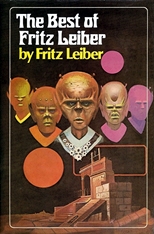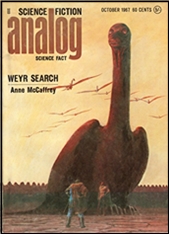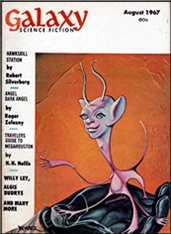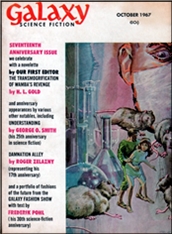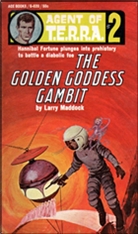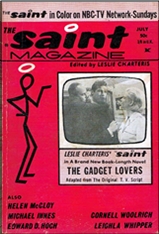Mon 15 Apr 2024
SF Diary Review: CHESTER ANDERSON – The Butterfly Kid.
Posted by Steve under Diary Reviews , Science Fiction & Fantasy[4] Comments
CHESTER ANDERSON – The Butterfly Kid. Book #1 of the Greenwich Village trilogy (see below). Pyramid X-1730; 1st printing, December 1967 (cover by Gray Morrow). Gregg Press, hardcover, 1977. Pocket, paperback, 1980. Dover, softcover, 2019. Nominated for the Hugo award in 1968 as Best Novel of 1967.
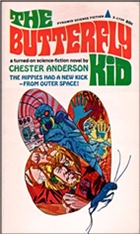
The Reality Pill is introduced to Greenwich Village by six-foot tall lobster aliens with crummy Lazlo Scott as their agent. Chester and his roommate Michael the Theodore Bear are first directly confronted withe potentialities of the pills when they meet Sean sitting on a park bench calmly making hallucinogenic butterflies come to life.
Later they accidentally take the pills themselves, and the resulting riot and destruction convinces them that the Communists or aliens or whatever behind the plot must be stopped. They recruit a group of friendly hippies and set out for the reservoir to stop citywide pollution
The appeal is that of the quietly wild hippy outlook on life as they go about saving the world. “Have you ever tried to talk a bunch of hippies into helping you save the world? Forget it, Next time I save the world, by starky, I’m going to do it solo. Faster that way, less work.”
Lots of laughs, which is remarkable in science fiction., but the ending is obvious. It is not until page 166 that the method of defeating the aliens occurs to Chester, but then he has other things on his mind.
Rating: ****
The Greenwich Village trilogy –
1 The Butterfly Kid (1967) by Chester Anderson
2 The Unicorn Girl (1969) by Michael Kurland
3 The Probability Pad (1970) by T. A. Waters

